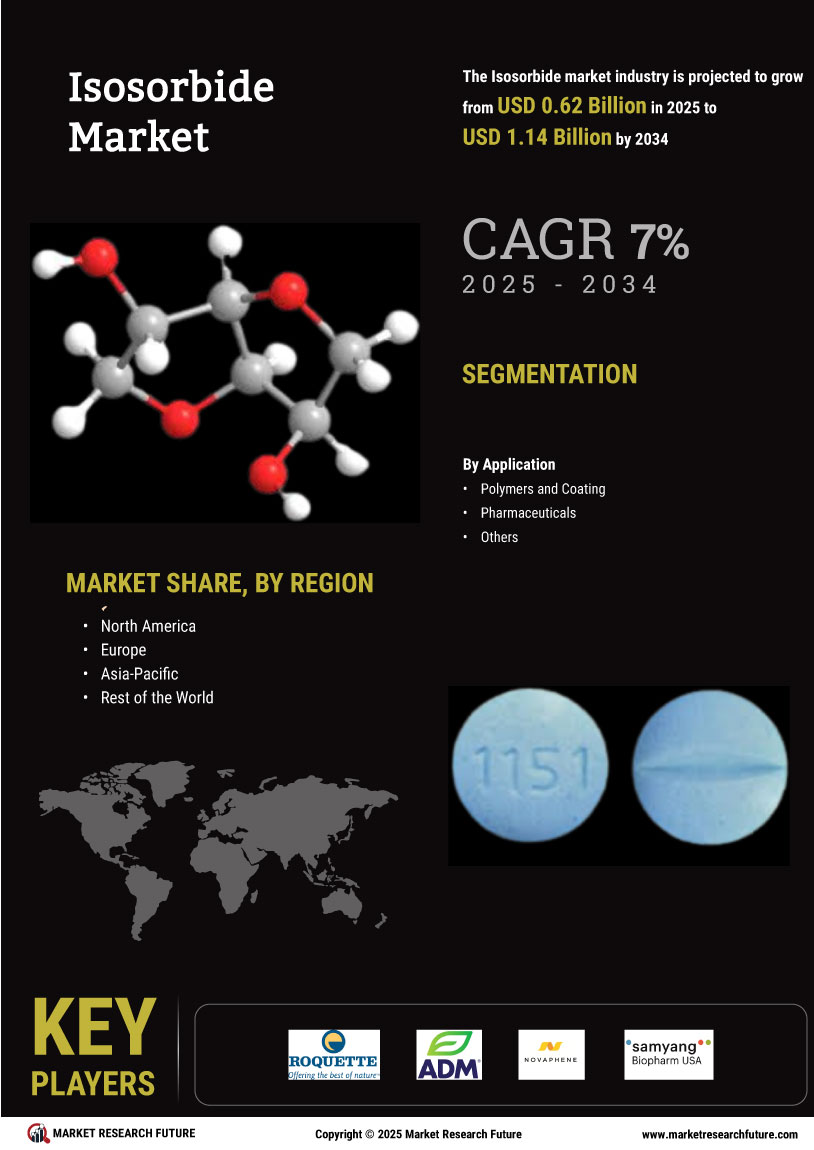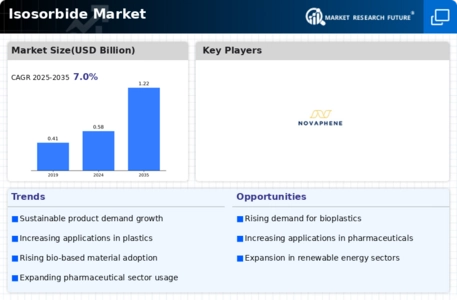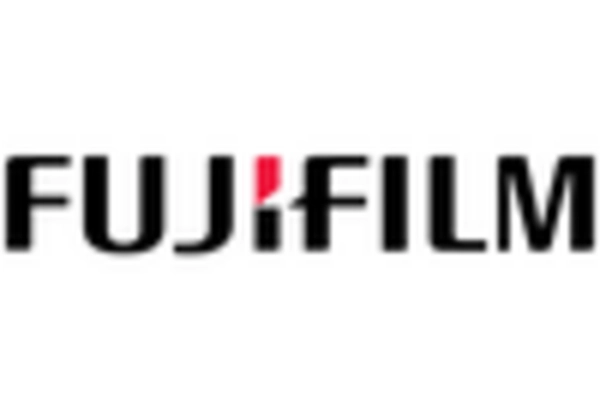Market Growth Projections
The Global Isosorbide Market Industry is projected to experience substantial growth in the coming years. With a market value anticipated to reach 1.22 USD Billion by 2035, the industry is poised for a robust expansion. The compound annual growth rate of 6.99% from 2025 to 2035 indicates a strong upward trajectory, driven by various factors such as increasing demand for biodegradable plastics and pharmaceutical applications. This growth reflects the broader trend towards sustainability and innovation in material science, positioning isosorbide as a pivotal component in the development of eco-friendly products. The market's potential is further enhanced by ongoing research and development efforts aimed at optimizing isosorbide applications.
Growth in Pharmaceutical Applications
The Global Isosorbide Market Industry is significantly influenced by its applications in the pharmaceutical sector. Isosorbide Market is utilized in the production of various medications, particularly in the formulation of drug delivery systems. The increasing prevalence of chronic diseases and the need for innovative drug formulations are driving this growth. As the pharmaceutical industry continues to expand, the demand for isosorbide is expected to rise, contributing to the market's projected growth. By 2035, the market could reach 1.22 USD Billion, reflecting a robust compound annual growth rate of 6.99% from 2025 to 2035. This trend underscores the importance of isosorbide in enhancing therapeutic efficacy.
Regulatory Support for Green Chemistry
Regulatory support for green chemistry initiatives is a significant driver for the Global Isosorbide Market Industry. Governments worldwide are implementing policies that promote the use of renewable resources and sustainable practices in manufacturing. This regulatory environment encourages companies to invest in isosorbide production, as it aligns with global efforts to reduce reliance on fossil fuels. As regulations become more stringent, the demand for isosorbide is expected to increase, particularly in industries such as packaging and textiles. This support not only fosters innovation but also positions isosorbide as a key player in the transition towards a more sustainable economy.
Rising Demand for Biodegradable Plastics
The Global Isosorbide Market Industry is experiencing a surge in demand for biodegradable plastics, driven by increasing environmental concerns and regulatory pressures. Isosorbide Market, derived from renewable resources, serves as a key building block for producing eco-friendly polymers. The global shift towards sustainable materials is evident, with the biodegradable plastics market projected to reach 0.58 USD Billion in 2024. This trend is likely to bolster the isosorbide market, as manufacturers seek alternatives to petroleum-based plastics, aligning with global sustainability goals. As consumers become more environmentally conscious, the demand for isosorbide-based products is expected to rise, further propelling market growth.
Technological Advancements in Production
Technological advancements in the production of isosorbide are playing a crucial role in the Global Isosorbide Market Industry. Innovations in bioprocessing and catalysis are enhancing the efficiency and yield of isosorbide production from renewable feedstocks. These advancements not only reduce production costs but also improve the overall sustainability of the process. As manufacturers adopt these technologies, the market is likely to witness increased competitiveness and growth. The ability to produce isosorbide more efficiently aligns with the rising demand for sustainable materials, further solidifying its position in various applications, including plastics and pharmaceuticals.
Increasing Awareness of Sustainable Materials
The Global Isosorbide Market Industry is benefiting from the growing awareness of sustainable materials among consumers and manufacturers alike. As industries strive to reduce their carbon footprint, isosorbide, being a renewable resource, is gaining traction as a viable alternative to traditional materials. This shift is particularly evident in sectors such as packaging and automotive, where sustainability is becoming a key consideration. The increasing preference for eco-friendly products is expected to drive the demand for isosorbide, contributing to its market growth. As more companies commit to sustainability goals, the role of isosorbide in achieving these objectives will likely become more pronounced.

















Leave a Comment